Overview
Discover the pinnacle of triathlon science with Entalpi, straight from Norway – the heart of athletic breakthroughs. We’ve combined cutting-edge technology and extensive data to devise a method that has birthed world-record athletes.
Interested in elevating your health, fitness, and stamina? Experience our ‘money-ball’ strategy firsthand. While some dub it as “natural doping,” we proudly christen it Entalpi. Join us on this revolutionary fitness journey.
Timeline
August 2022 – March 2023
Applied Skills
Design Thinking, User Interviews, User Journey Mapping, User Stories, Wireframing, Rapid Prototyping, Usability Testing, and Visual Design.
Role
Senior Product Designer
As a Product Designer, I participated in all stages of the product creation process, ranging from generating ideas for the next big product breakthrough to making minor adjustments to visual elements just prior to release. In more detail, I led two projects:
1. Creation of an original Design System. This system serves as the primary catalyst for achieving consistency and unification in product design across multiple platforms.
2. Design of iOS Mobile Application.
Problem Space
The challenge is to create a training plan that distributes the appropriate amount of physical strain on the athlete, while also taking into consideration external factors that could affect the athlete’s physical and mental state during the preparation period for competitions.
1. Utilizing various lactate profiling methods, such as B+1.5, OBLA 4.0, and Log-Exp-ModDmax.
2. Implementing various tools and systems for profiling, training planning, and analysis.
3. Administering FTP (functional threshold power) tests.
4. Addressing the issue of athletes training too hard.
5. Incorporating lactate threshold data into training analysis and program development.
6. Clarifying what to focus on during each workout and why it is important.
7. Planning future training weeks and months to help athletes understand their upcoming workload.
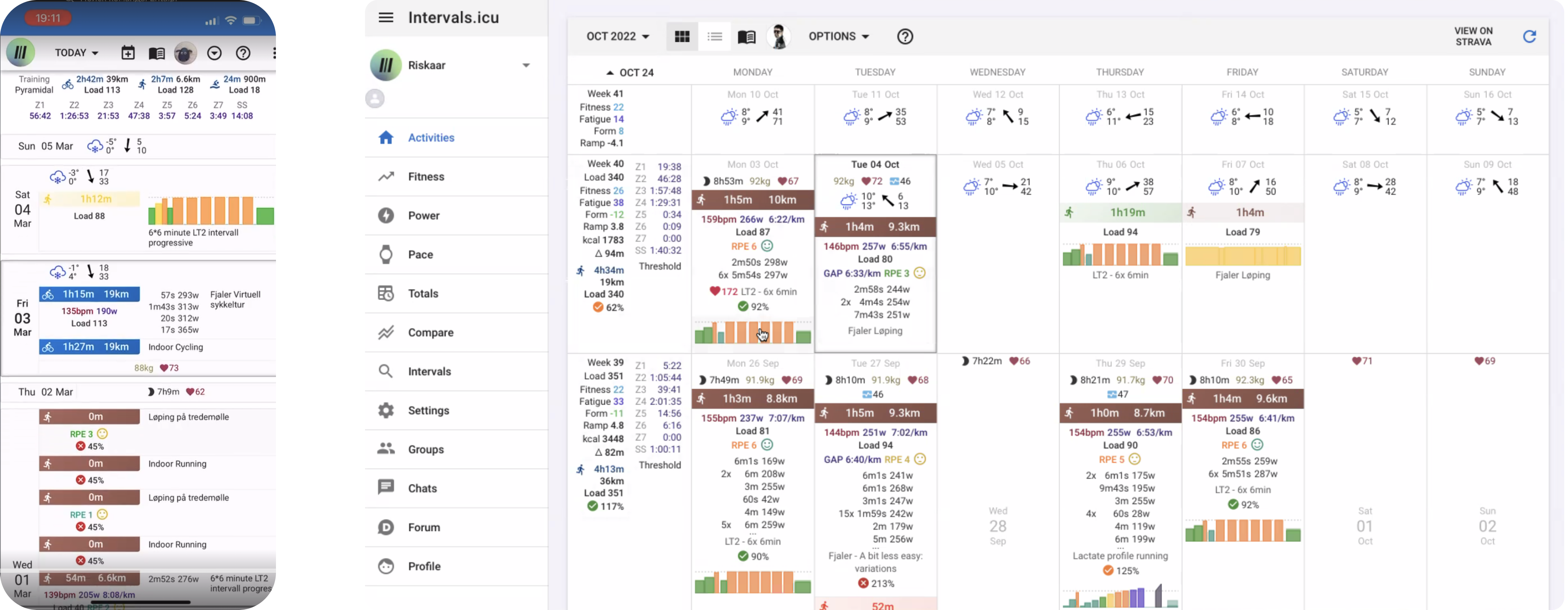
Research
Enthalpi sees a significant opportunity in this market, particularly in the niche segment of athletic performance optimization. By addressing the current gaps in the market and providing a comprehensive solution that includes lactate meter and threshold analysis, as well as personalized workout planning, Enthalpi has the potential to capture a significant share of the market and become a leading player in the industry.


Customer Journey Map
Our aim with Customer Journey Mapping (CJM) was to analyze every stage of a customer’s experience with our product. Our goal was to pinpoint areas where our product fell short of user expectations or where we may have even turned off potential users.

Ideate
Perceptual patterns in digital products encompass various elements such as tone of voice, typography, color palette, layouts, illustrations and iconography styles, shapes and textures, spacing, imagery, interactions or animations, and the unique ways in which these elements are utilized and integrated within the interface.
Before initiating the actual redesign, I conducted a workshop with our team to establish a clear definition of Perceptual Patterns.
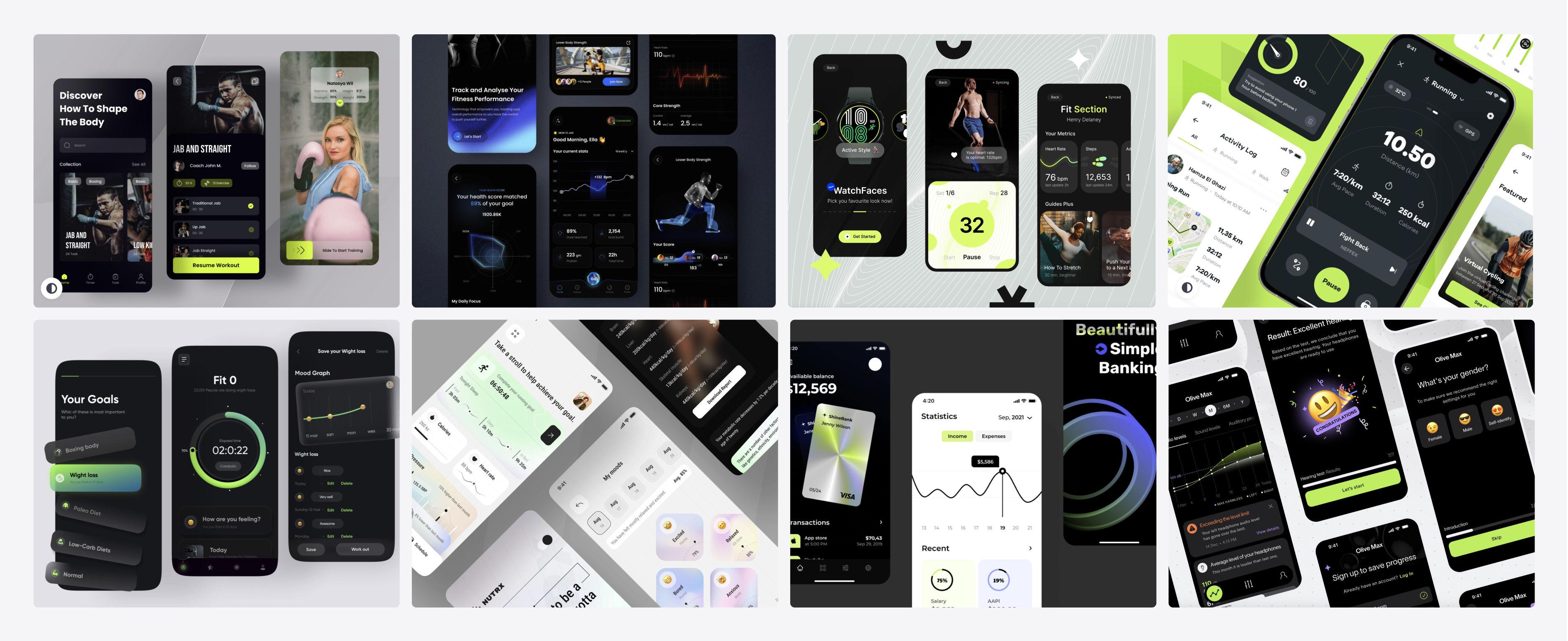
Together with the entire team, we created a mood board to ensure that I wouldn’t overlook the distinctive typography, color, or other visual design elements that are unique to our company while working on the redesign.
Design Process
By the time of the design phase, Entalpi had a functional web prototype, an established design, and 100,000 loyal customers who had participated in prototype testing and completed Google surveys.
During the design process, multiple iterations of different concept generations were explored, ranging from conservative designs that closely aligned with the current brand, to completely new and unconventional designs. Several concepts were generated as a result, which needed to be reviewed and validated by the team.
Here you can see several iterations of the main screen. We were able to solve 4 out of 7 problems by changing the flow of the main screen.
Next, I would like to elaborate in more detail on the problem-solving process using the example of the issue of athletes training too much.

Problem. Athletes training too hard.
We started brainstorming with the team and formed an additional set of questions around this problem.
First of all, we used the previously obtained information and combined it with specific answers within the framework of this problem. Here are some conclusions:
1. We need a budget for the day, which shows how many calories each person can consume on that training day. If there are several workouts, then the budget helps us distribute the load accordingly.
2. For long-term competition preparation, planning and a systematic approach are crucial.
– Macrocycle: this includes a four-year Olympic cycle and a macrocycle (one year or several months).
– Medium-term: mesocycle – a plan for several days.
– Short-term: microcycle – one day.
We had formed the first idea

User Tests
– 2 sports scientists
-4 Olympic athletes
– 20 enthusiasts
– 100 beginners
Questions
How to understand how much one should train specifically today?
How to understand during the training whether to decrease or increase the intensity?
What measures should the athlete take before, during, and after training to ensure that they are not training too much?

We significantly changed the flow, eliminated unnecessary information, reorganized, and add important information.
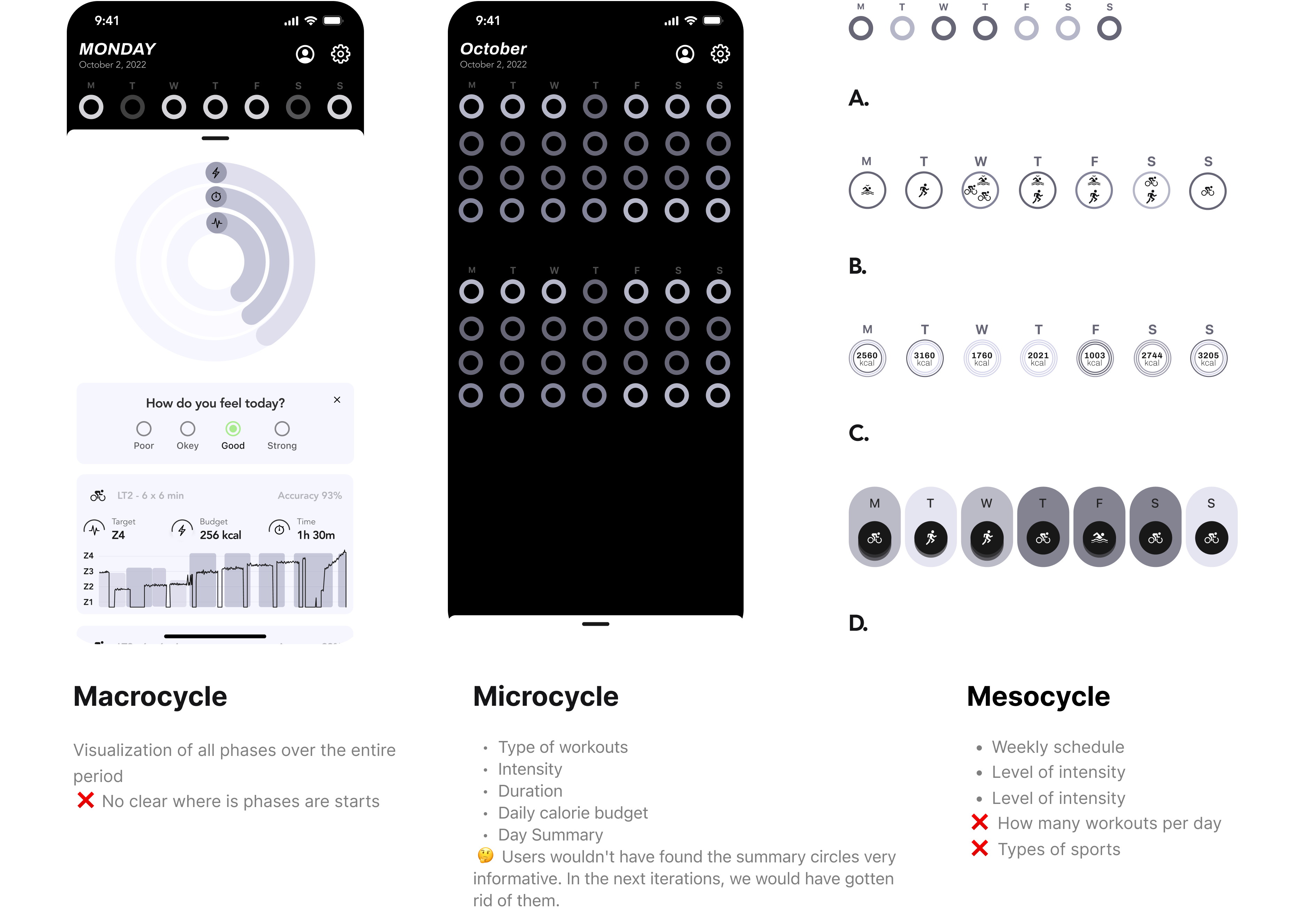
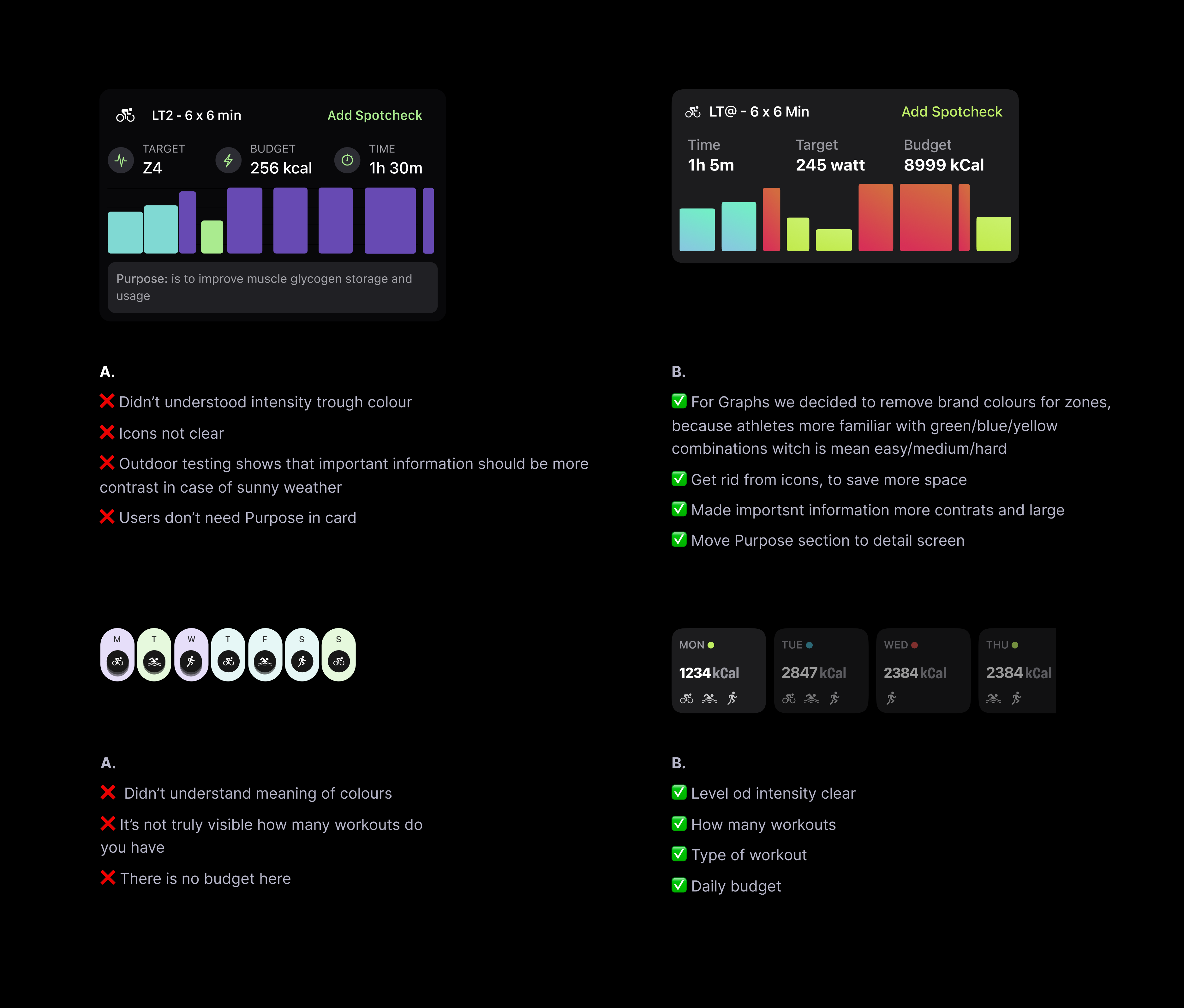
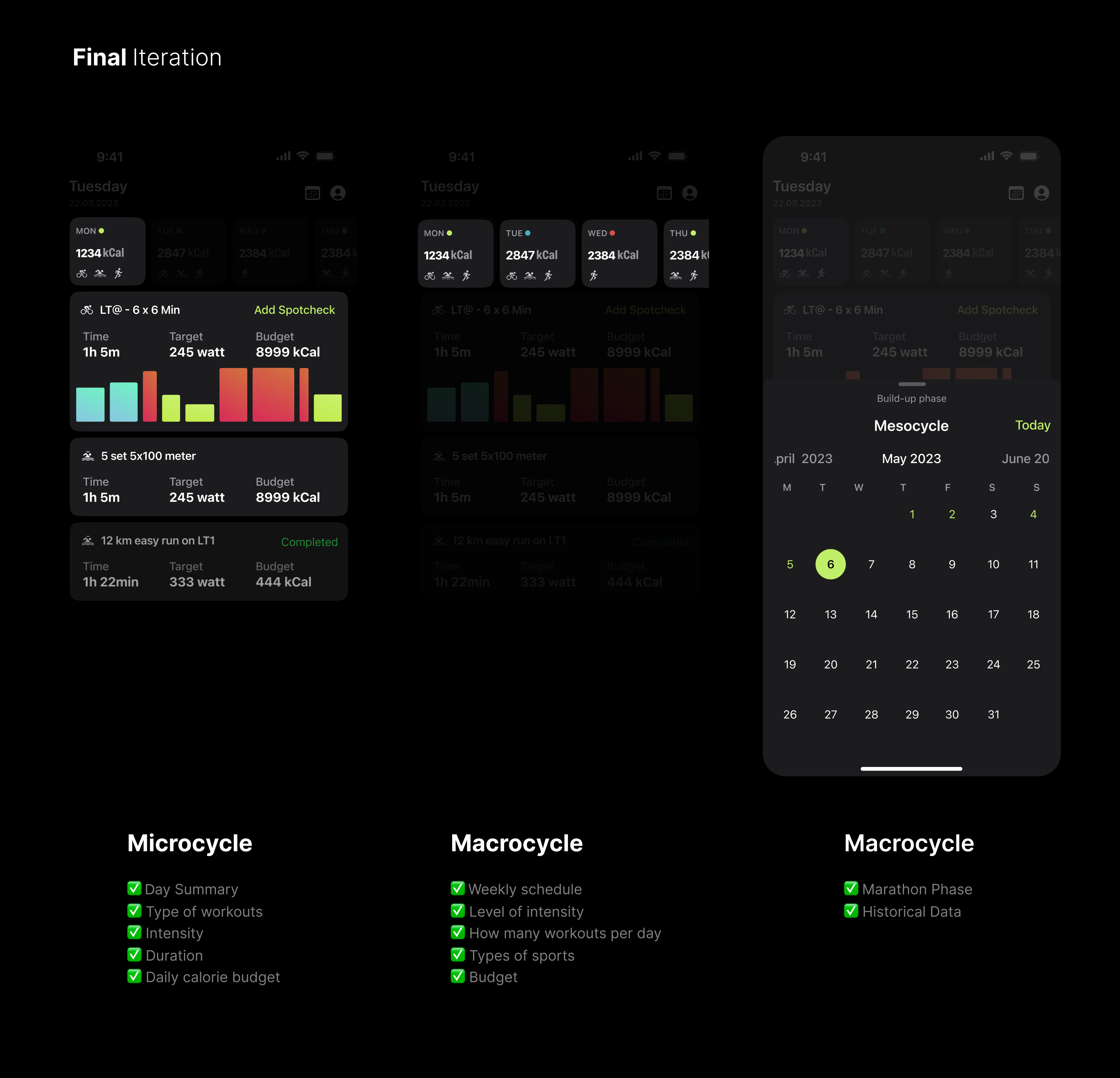

Other pages and features
A tremendous amount of work was undertaken to redesign and improve the UX of the entire product, involving the entire company. All teams halted their work to focus solely on this task, working together to ensure its completion.
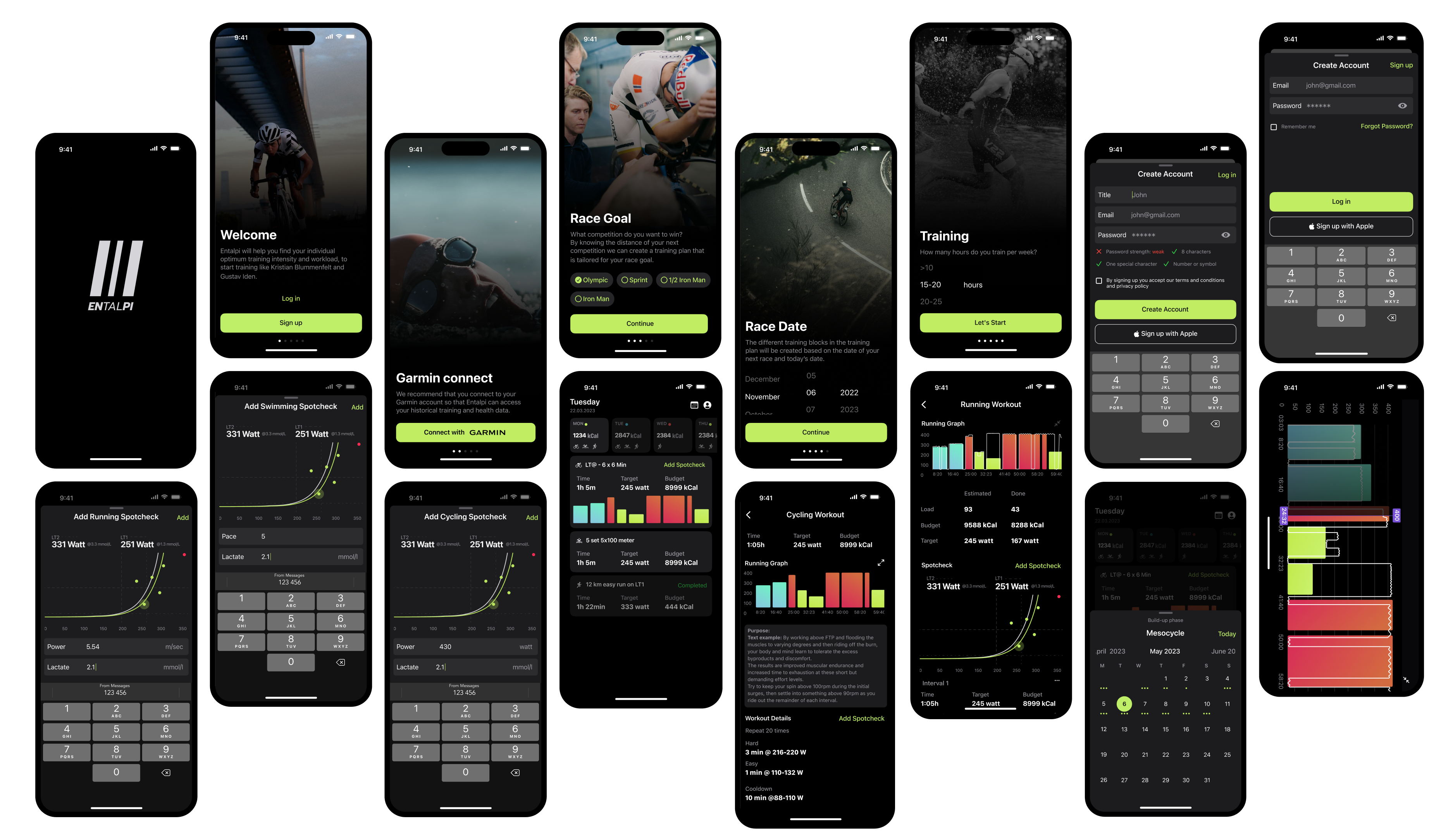
Outcome
After a year of development, we have successfully built an application with 57 screens that addressed the following problems:
– Taking into account the limitations of competitors
– Developed an application that analyzes all the necessary parameters for building the best training process
– Increase the efficiency of athletes
– Professional athletes by 2%;
– Middle-level athletes by 24%;
– Beginners by 61%.
✅ Developed a comprehensive training program that considers the athlete’s fitness level, goals, and competition schedule.
✅ Utilized various lactate profiling methods such as B+1,5, OBLA 4.0, Log-Exp-ModDmax, and use MLSS as a standard lactate profiling.
✅ Implemented tools and systems for profiling, training planning, and analysis to track progress and make adjustments as necessary.
✅ Conduct regular FTP (functional threshold power) tests to measure the athlete’s progress and adjust training zones.
✅ Incorporated lactate threshold data into the training analysis and used it to develop a training program that balances intensity and recovery.
✅ Provided athletes with a clear understanding of the goals and focus of each workout to ensure they are maximizing their training time.
✅ Planned future training weeks and months to help athletes understand the upcoming workload and prepare accordingly.
✅ Evaluated the training program’s effectiveness and made necessary adjustments to optimize performance while minimizing the risk of injury and burnout.

Lessons Learned
1. Redesign + UX + Design System = 🤯
Redesigning, improving user experience, and creating a design system from scratch at the same time was very difficult. Had I had more time, I would first have made a design system based on the old design, and after it had been implemented, I would have thought about the redesign and UX improvement.
2. Management is an art
At first, I tried to make the design process more democratic, but after a few iterations it became clear that project teams definitely needed a single control center: otherwise, it all would have resulted in chaos.
3. Product Design Innovations Reduce Costs and Increase Company ValueSumming up: The company doubled the money it spent on hiring employees for the redesign project. It reduced the cost for product manufacturing and the company’s value increased, which was later useful for its cost negotiation.